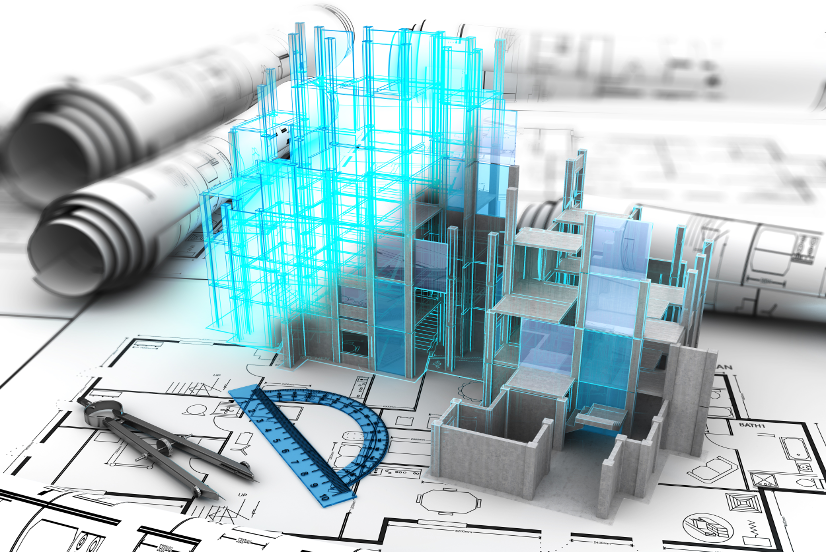How to Reduce Costs in Projects with 3D Modeling and Digital Twins
Introduction: The New Era of Cost Optimization
Companies are constantly looking for new strategies to reduce costs without compromising quality or safety. In this regard, digital twins and 3D modeling have revolutionized the way industries such as mining, construction, logistics, healthcare, hospitality, and education manage their infrastructure and operations
Through 3D modeling and technologies like Scan to BIM (scan2BIM), it is possible to create precise digital representations of buildings, industrial plants, and other physical assets. This not only improves project planning and execution but also reduces errors, optimizes maintenance, and extends the lifespan of infrastructures, generating substantial savings.
Next, we will explore how these technologies—digital twins and 3D modeling—help reduce costs in different sectors, with specific examples and implementation strategies.
1. Cost Reduction in Design and Construction with Scan to BIM
What is Scan to BIM and why is it key to cost reduction?
Scan to BIM (scan2BIM) is a process that captures data from existing buildings using 3D laser scanners and converts them into digital models in Building Information Modeling (BIM). This methodology allows construction companies, universities, hospitals, and hotels to have precise virtual representations of their facilities, facilitating renovations, expansions, and preventive maintenance without unforeseen cost overruns.
Benefits for the Hospitality and Healthcare Industry
Hotels and hospitals face constant challenges in upgrading their infrastructure without disrupting operations. By implementing Scan to BIM, they can obtain accurate models of their buildings without relying on outdated physical blueprints. This enables:
- Optimized Renovations: Avoids planning errors by providing an exact structure of the building.
- Reduced Material Waste: Ensures only necessary supplies are purchased based on precise measurements.
- Faster Permits and Regulations: Digital blueprints streamline authorization processes.
Impact on the Mining and Metallurgical Industry
In mining and metallurgy, 3D modeling helps design more efficient processing plants and enhances safety in high-risk operations. Some key advantages include:
- Industrial Process Simulation: Optimizes the design of new facilities to minimize waste.
- Structural Failure Prevention: Identifies critical points before any construction begins.
- Reduced Downtime: Simulates maintenance procedures to lower plant shutdown costs.
2. Operational and Maintenance Savings with Digital Twins
Digital twins combine 3D modeling with real-time data to monitor and optimize infrastructure and industrial processes. Some ways they generate savings include:
Predictive Maintenance for Buildings and Industrial Plants
Unlike traditional maintenance (corrective or scheduled), digital twins
enable predictive maintenance, reducing unexpected infrastructure costs.
🔹 In universities and hospitals, HVAC and electrical systems can be monitored in real time to predict failures and prevent costly urgent repairs.
🔹 In ports and logistics, digital monitoring of warehouses and cranes helps anticipate wear on critical structures, preventing expensive downtime.
Monitoring in Mining and Metallurgy
Digital twins allow the mining industry to evaluate the structural condition of tunnels, bridges, and machinery in real time.
- Environmental Impact Simulation: Optimizes the use of natural resources and reduces regulatory fines.
- Heavy Machinery Monitoring: Predicts failures before they occur, preventing multimillion-dollar losses due to downtime.
Recent studies suggest that the use of digital twins can result in up to a 20% reduction in industrial maintenance costs. This technology not only minimizes repair and equipment replacement costs but also extends infrastructure lifespan, significantly reducing investment costs in new equipment. Additionally, the operational efficiency improvements provided by these virtual models can reduce energy and resource consumption, generating substantial additional savings.
3. Material Optimization and Waste Reduction
One of the biggest challenges in construction, mining, and logistics is reducing material waste. Thanks to digital twins and 3D modeling, companies can:
🔹 Accurately calculate the amount of materials needed before starting a project.
🔹 Reduce excess inventory, freeing up capital for other strategic investments.
🔹 Minimize manufacturing errors by adjusting designs before production.
In the industrial sector, documented case studies show measurable results from digital twin implementations. In a rolling mill, a digital twin was used to continuously adjust process parameters based on real-time conditions, leading to a 5% improvement in product quality and a 10% reduction in material waste. These figures demonstrate the tangible potential of digital twins for real-time continuous improvement.
4. Digitalization and Automation in Logistics and Ports
In the logistics and port industry, digital twins help:
- 🔹 Optimize container traffic: Real-time simulation of warehouse distribution.
- 🔹 Reduce loading and unloading times: Identifying bottlenecks in operations.
- 🔹 Prevent collisions and accidents: Simulating crane and cargo vehicle movements.
A logistics company implemented a digital twin of its entire network, providing real-time visibility into inventory, production, and logistics. The results were impressive: a 20% reduction in inventory levels and a 15% improvement in delivery accuracy. This case illustrates how digital twins provide a holistic, real-time view of complex operations in port and logistics environments, enabling faster, more precise decision-making that directly translates into significant savings.
Conclusion: The Future of Cost Reduction with 3D Modeling and Digital Twins
The mining, metallurgical, hospitality, healthcare, logistics, and construction industries are rapidly adopting digital twins and 3D modeling to reduce operating costs and improve efficiency.
The use of Scan to BIM and predictive maintenance has demonstrated significant savings in time, materials, and repair costs, making them key strategies for project optimization.
🔹 Companies that invest in these technologies today will be better prepared to face future challenges with more efficient and sustainable processes.
If your company seeks to reduce costs and improve efficiency with 3D modeling and digital twins, contact us to learn how we can help you implement these solutions.



